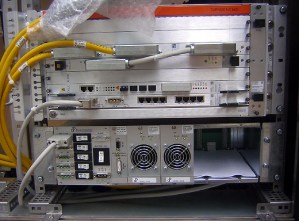
At this year’s Broadband World Forum event in Paris, Nokia Siemens Networks announced that it has successfully tested a new “Phantom DSL” technology that can bring massive broadband to ordinary bonded copper wiring—the kind that carries plain old telephone services to millions of homes around the world. According to the company, the technology managed transmission bandwidth of 825 Mbps per second over 400 meters of copper wire, and sustained 750 Mbps over 500 meters of copper wire. The technology holds the promise of delivering broadband Internet to homes using existing copper wire infrastructure, rather than having to lay new fiber or cable-based connections.
“Laying down new optical fiber to the home remains costly, though it is capable of delivering very high speeds and is a definite solution for long-term bandwidth requirements,” said Nokia Siemens Networks head of broadband access business lines Eduard Scheiterer, in a statement. “However, the innovative use of technologies such as phantom circuits helps operators provide an efficient last mile connectivity with existing copper wires.”
In comparison, peak DSL offerings available today max out at about 40 Mbps, and in the United States it’s not unusual for residential customers to see DSL service peak out at 1.5 Mbps or lower—assuming it’s available at all. However, they can usually run over longer stretches of copper wire to a home. Overall, Nokia Siemens estimates the Phantom DSL technology could lead to bandwidth increases of 50 to 75 percent over existing bonded copper lines.
A real question is when technology like this will reach consumers. Nokia Siemens says Phantom DSL will be included in their hiX 562x/3x DSLAM products; those are the devices used at phone company central offices and facilities to manage DSL lines. So unless telcos buy into the technology—and deploy it—there’s nothing consumers can do.
[Image: Björn Heller]


